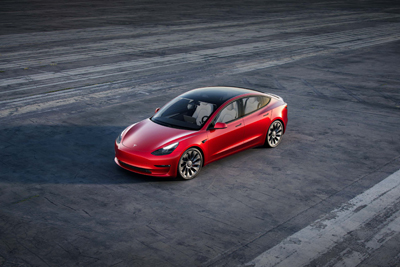A Tesla Model 3 wrongful death lawsuit alleges a defective Autopilot system caused the deaths of two California residents.
Plaintiffs Becky Edwards and Tamara Neuhaus, the children of David and Sheila Brown, the couple killed in the Tesla Model 3 crash, contend their parents "reasonably believed the Tesla Model 3 was safer than a human-operated vehicle."
David Brown believed this based on Tesla's alleged claim the "self-driving safety components engineered into the vehicle and advertised by Defendant would prevent fatal injury resulting from the vehicle automatically accelerating without the operator’s control into a fixed object of any kind."
According to the lawsuit, the 2019 Tesla Model 3 technology should have prevented the vehicle from automatically accelerating without the driver controlling the acceleration.
The wrongful death lawsuit asserts the 2019 Tesla Model 3 was marketed as a state-of-the-art vehicle, but the plaintiffs claim the Model 3 did not have an effective automatic emergency braking system, didn't have safe acceleration and failed to have operable crash avoidance features.
The Tesla Model 3 Crash
On Aug. 12, 2020, at about 11:20 a.m., David Brown, 75, was driving the 2019 Tesla Model 3 with his wife, Sheila Brown, as the passenger.
The Tesla Model 3 was traveling northbound on State Route 85. The lawsuit alleges David Brown had Autopilot engaged, which included an emergency braking system and traffic-aware cruise control which would match the acceleration of the vehicle to traffic speeds.
The following is taken directly from the wrongful death lawsuit:
"As David Brown and Sheila Brown approached the Saratoga Avenue off ramp heading northbound on State Route 85, the car automatically accelerated without David's knowledge or direction, colliding into a Toyota Sienna ahead of them on the highway several times.
"David Brown then attempted to maneuver the Tesla Model 3 down the Saratoga Avenue off ramp, where it automatically accelerated again without David's knowledge or direction, this time colliding with a pickup truck at the intersection. The Tesla Model 3 then erupted into flames."
The plaintiffs say David Brown died shortly after being brought to the hospital, and Sheila Brown died from her injuries two days later.
Tesla was allegedly negligent and careless by failing to provide adequate instructions and warnings regarding protection against injuries caused by unintended acceleration events. Additionally, the lawsuit alleges Tesla failed to warn about the alleged lack of an effective automatic emergency braking system.
Tesla Argues Autopilot Wasn't Engaged
According to Tesla, the evidence shows the high-speed crash was caused by the driver, not by Autopilot or anything defective with the Model 3.
The federal National Transportation Safety Board investigated the Model 3 crash and determined Autopilot did not cause the crash because the driver overrode the feature.
The NTSB said the driver engaged Autopilot but the feature was deactivated when David Brown pressed the accelerator pedal and crashed while traveling 110 mph.
The Tesla Model 3 was traveling 68 mph behind a minivan when the speed increased to 72 mph, and automatic emergency braking activated and lowered the speed of the vehicle.
The NTSB found the accelerator pedal input reached 95% when the Model 3 slammed into a minivan and left the highway at 114 mph. The Tesla then struck a pickup truck at 110 mph, which caused the Model 3 to catch fire.
Investigators also said the driver received several audio and visual warnings because his hands weren't on the steering wheel.
Although the wrongful death lawsuit blames the crash on the use of Autopilot, the NTSB closed its investigation based on the driver overriding the feature.
According to Tesla, Autopilot "struck out" when the driver did not put his hands on the steering wheel after multiple warnings. Tesla argues the strike-out triggered a pop-up warning to "Take Over Immediately" 12 seconds before the first rear-end impact.
Tesla contends the Model 3 driver stepped on the accelerator pedal and never hit the brakes as the Model 3 crashed at nearly 114 mph, 17 seconds after Autopilot struck out.
“None of this has anything to do with Autopilot, as Autopilot was disengaged," Tesla said. "Autopilot does not function at over 90 mph, it was not active or engaged here, even when Autopilot was engaged the driver overrode it by pressing the accelerator pedal, and the reason the crash happened is because the driver accelerated and steered and caused the crash.”
The Tesla Model 3 lawsuit was filed in the Superior Court of California, County of Santa Clara: Becky Edwards and Tamara Neuhaus v. Tesla, Inc., et al.
The plaintiffs are represented by Walkup, Melodia, Kelly & Schoenberger.













